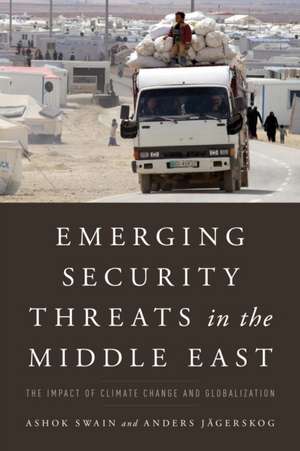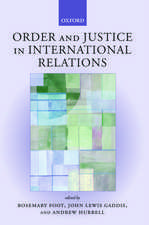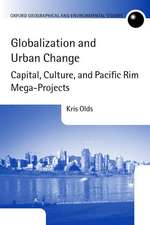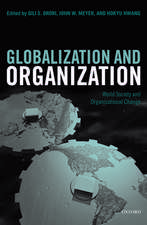Emerging Security Threats in the Middle East
Autor Ashok Swain, Anders Jagerskogen Limba Engleză Paperback – 11 apr 2016
Preț: 395.06 lei
Nou
Puncte Express: 593
Preț estimativ în valută:
75.60€ • 78.64$ • 62.42£
75.60€ • 78.64$ • 62.42£
Carte tipărită la comandă
Livrare economică 15-29 aprilie
Preluare comenzi: 021 569.72.76
Specificații
ISBN-13: 9781442247642
ISBN-10: 1442247649
Pagini: 208
Ilustrații: 10 tables
Dimensiuni: 152 x 230 x 15 mm
Greutate: 0.32 kg
Editura: Rowman & Littlefield
ISBN-10: 1442247649
Pagini: 208
Ilustrații: 10 tables
Dimensiuni: 152 x 230 x 15 mm
Greutate: 0.32 kg
Editura: Rowman & Littlefield
Notă biografică
Cuprins
Chapter 1: Introduction: Middle East and Its New Sources of Insecurity
Understanding Security in the Middle East
Study of Security in the Middle East
The Middle East Region
International Actors and Regional Security in the Middle East
The Rise and Fall of the `Arab Spring¿ and the Rise of the ISIS
Future Security Threats: Emerging Scenarios
Chapter 2: Achieving Food Security: A Critical Challenge
Increasing Food demand in the Region
Import and Export of Water from the Region
Land Investments as a Strategy to Address Food Security
Climate Change, Water Availability and Food Production
Concluding Thoughts
Chapter 3: Water Scarcity: Threat to Peace and Stability
Water Scarcity and Water Governance in the Middle East
Supply versus Demand Side Solutions
High Degree of Shared Water Resources
New Trends in the Region ¿ The Use of Water as a Weapon
Connecting to Security Architecture
Chapter 4. Energy Security and its Changing Dynamics in the Middle East
Exporters of Crude Oil and Natural Gas
Importers of Crude Oil and Natural Gas
New Challenges and New Discoveries
Moving out of Oil and Gas Trap
Relying on Renewables
Evaluating Region¿s Energy Security Scenario
Chapter 5: Managing Large Population Migration
Importance of Remittances and Challenges of Foreign Workers
The Middle East: The Region of and for Refugees
Migrants in the Middle East: More as Peace Wreckers than Peace Makers
Chapter 6: Conclusion ¿ In Search of Sustainable Regional Security
Four Fault Lines in Regional Security Structure
Identifying Immediate Security Risks
Region to Regain the Initiative
Descriere
Increasingly the Middle East and its growing population face a highly complex and fragile security system. The book analyzes these emerging security challenges in a comprehensive and systematic manner. It draws national and regional security issues into both the global security and human security perspectives.
















